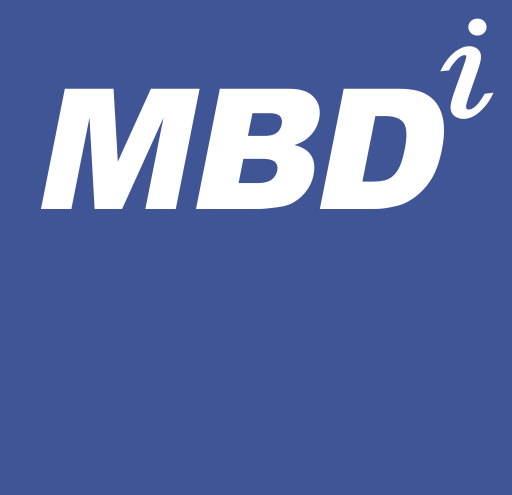Much has been written about the Capture and Proposal Management Process (CPM). At most government services organizations CPM is a well defined, documented and integrated procedure. Likewise, most BD organizations are well acquainted with the Step, Stage or Gate Review processes, from the standpoint of understanding what each practice is and what is needed at each stage.
What many BD organizations have not documented or institutionalized is an Opportunity Identification and Qualification (OI&Q)i Process. As a result, companies often struggle to understand what (OI&Q)i really involves and how to integrate or link these two processes (CPM & (OI&Q)i ) together.
First, it’s important to understand that these terms are not interchangeable. Rather, they have fundamentally distinct meanings. A CPM process is based upon an already identified opportunity, whether or not that opportunity is actually qualified, whereas an (OI&Q)i process denotes the primary identification and qualification of those leads that may become opportunities.
Capture concerns the pursuit of opportunities. The Opportunity Identification and Qualification (OI&Q)i process pertains to selecting the RIGHT opportunities to engage at the outset. Evaluating this from a systems perspective, the CPM process is reactive and dependent. The OIQ process, on the other hand, is proactive and independent.
Statistically, it has been found that BD organizations working with clients solidifying relationships and shaping prospects for more than a year in (OI&Q)i (the qualifying / disqualifying phase), produce win rates that exceed 75%. While those organizations that focus predominantly on short-term, “bid” opportunities in the capture phase, with less than 365 days of client interaction and intelligence gathering, experience less than a 15% win rate.
Capture and proposal processes tend to be well-defined, well-funded and staffed with individuals with a common level of thinking. They are well understood and commonly used in BD circles. However, few BD organizations possess the disciplined thinking and behavior to manage an (OI&Q)i process largely because their plans and actions are either personality driven, department/group/division driven or driven by the resources and services on hand.
(OI&Q)i involves early intelligence gathering that “de-selects” poor opportunities and substantiates the selection of opportunities with valid data. In that way the Business Development Team running (OI&Q)i is driven to find the best opportunities. Once these opportunities have been identified and validated, it’s the Capture Team’s job to ensure that these opportunities are won. Both processes rely heavily on team-work to guarantee that optimum information is available to assist in winning the bid. Intel is critical to both processes. In fact, good Intel plays a significant role in disqualifying low probability opportunities early. It’s this same valid Intel, gathered during the (OI&Q)i phase, which then feeds the Capture Process to assist in crafting the most appropriate offering, thereby ensuring the winning bid.
Weak, flawed, or missing Intel on the front end is very expensive for the Capture Process. CPM is a costly endeavor. It drains Bid and Proposal (B&P) funds if not linked to an (OI&Q)i process that uncovers and presents high probability leads to pursue. (OI&Q)i fosters wise capital investment because it targets only those opportunities which are correctly identified, qualified and supported by Intel as well as those that have the best chance of winning, thus increasing the ROI on B&P money.
This front end (OI&Q)i process must drive the standard. The Step/Stage process is fed by intelligence that matches specific, agreed-upon criteria to produce qualified opportunities. This procedure requires knowing what questions to ask of which individuals, what information to acquire, how to validate it, how to substantiate it and, in the end, how to summarize the resulting Intel for presentation to the Capture Team who will pursue the opportunities. Ultimately, the Capture Manager must rely on the information gathered during the (OI&Q)i stage to make an informed business decision about the risk profile of the opportunity and balance it with the win percentage. Lack of Intel leads to poor business decisions, frequently based on gut feel and not upon customer expectations or input.
The CPM Process functions as a built-in and continual audit of the information discovered early with the (OI&Q)i process. In the same way the Stage/Step review process must incorporate specific information that is presented and validated at each level in order to continue running the Capture Process.
Many Capture Managers lack experience in asking the hard questions early and often to disqualify a lead. Unfortunately, only much later do they conclude that there’s little chance of their winning the bid. By then, they’ve often invested too much capital upfront to make the hard decision to cut their losses and walk away from the project. Obtaining better Intel on the front end, which in turn drives the Capture Process, is the solution to this dilemma. Professionals who’ve learned how to qualify or disqualify opportunities, have shared with me that initially they believed it was critical to have all the answers. After gaining experience, they discovered that it’s substantially more important to know what questions to ask, how to ask them and how to interpret the answers. A second insight they have shared is that if an agency cannot convince you (or themselves) that a problem exists and that there is a need to solve it, why should you try to convince them that they need your solution! Writing a first-rate proposal is no match for a submitted bid that actually addresses the problem. In any case, the only way to really understand the problem is to develop a relationship anchored on confidence and trust before the RFP is ever released and the “cone of silence” goes up.
It just makes sense going forward for Government Services firms to balance their B&P funds with quality Intel developed by the (OI&Q)i process, especially in an era of dwindling opportunities and increased competition. Early teaming among your Business Development and Capture Management Professionals together with Subject Matter Experts using a structured Opportunity Identification and Qualification Process, results in a winning outcome and an enviable return on time, talent and budget resources.


